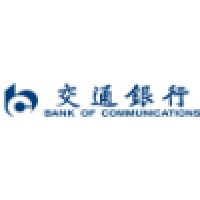Company Cyber Security Posture
NANA
NA Company Details
NA
NA
NA
NA
NA
NA
Scan still pending
NA
NA
Between 200 and 800
This score is AI-generated and less favored by cyber insurers, who prefer the TPRM score.
 NA Global Score
NA Global Score.png)

Company Scoring based on AI Models
| Model Name | Date | Description | Current Score Difference | Score |
|---|---|---|---|---|
| AVERAGE-Industry | 03-12-2025 | This score represents the average cybersecurity rating of companies already scanned within the same industry. It provides a benchmark to compare an individual company's security posture against its industry peers. | N/A | Between 200 and 800 |
Company Cyber Security News & History
| Entity | Type | Severity | Impact | Seen | Url ID | Details | View |
|---|
Company Subsidiaries

NA
Access Data Using Our API

Get company history
.png)
NA Cyber Security News
Portugal’s largest bank signs Tink to underpin its new app Dabox
Portugal's banking heavyweight, Caixa Geral de Depósitos (CGD), has inked a new partnership with Swedish open banking platform Tink.
How a CGD firm cut cost & boosted profits
Leading city gas distributor is on its journey to improve profitability and enhance capital productivity.
HPCL Exam Date 2024 Out, Hall Ticket, Exam Schedule
The HPCL Computer Based Exam Date 2024 is scheduled to be held on 18th August 2024. Check complete exam schedule from here.

NA Similar Companies

BBVA
At BBVA we are leading the transformation of banking worldwide, united in pursuing our goal of bringing the age of opportunity to everyone. Firmly focused on the future, our on-going digital transformation is already producing disruptive innovations that power our vision of banking. Every one of o

National Bank of Egypt (NBE)
Since its inception in 1898 with a capital of GBP1 million, NBE has been regarded as one of the oldest and most respected commercial banks in Egypt.Never isolated from national issues or concerns, NBE has been the primary supporter of Egypt’s national economy by financing the major Egyptian national

Bank of Communications Co., Ltd. London Branch
Founded in 1908, Bank of Communications Co., Ltd. ("the Bank") is one of the oldest banks in China as well as one of the note-issuing banks in modern China. The Bank was listed on the Hong Kong Stock Exchange in June 2005 and on the Shanghai Stock Exchange in May 2007. The Bank currently has 18

AU SMALL FINANCE BANK
The dream started two decades ago by Mr. Sanjay Agarwal, a merit holder Chartered Accountant and a first generation entrepreneur, along with his proficient team. Together, the dexterous team embarked on a journey of excellence while enriching lives along the way. What started off as a dream to be

Nonghyup Bank
Nonghyup Bank is a banking company based out of 120 Tongil-ro, Jung-gu, Seoul, South Korea. Show more Show less

Colonial Bank
BB&T formerly Colonial is a financial services company headquartered in Winston-Salem, NC. About BB&T Printable Version Building on a tradition of excellence in community banking that stretches back to 1872, BB&T continues to offer clients a complete range of financial services including b

Frequently Asked Questions
Explore insights on cybersecurity incidents, risk posture, and Rankiteo's assessments.
NA CyberSecurity History Information
How many cyber incidents has NA faced?
Total Incidents: According to Rankiteo, NA has faced 0 incidents in the past.
What types of cybersecurity incidents have occurred at NA?
Incident Types: The types of cybersecurity incidents that have occurred include .
Additional Questions
What Do We Measure?
















Every week, Rankiteo analyzes billions of signals to give organizations a sharper, faster view of emerging risks. With deeper, more actionable intelligence at their fingertips, security teams can outpace threat actors, respond instantly to Zero-Day attacks, and dramatically shrink their risk exposure window.
These are some of the factors we use to calculate the overall score:
Identify exposed access points, detect misconfigured SSL certificates, and uncover vulnerabilities across the network infrastructure.
Gain visibility into the software components used within an organization to detect vulnerabilities, manage risk, and ensure supply chain security.
Monitor and manage all IT assets and their configurations to ensure accurate, real-time visibility across the company's technology environment.
Leverage real-time insights on active threats, malware campaigns, and emerging vulnerabilities to proactively defend against evolving cyberattacks.




